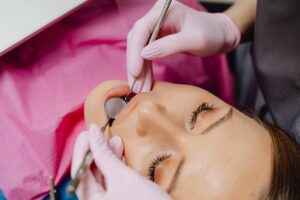How to Prevent and Treat Gum Diseases:
A Periodontist's Guide
Gum disease, or periodontal disease, is a common issue that affects many people worldwide. Left untreated, it can lead to serious complications, including tooth loss. However, gum disease is preventable, and there are effective treatments available to keep your gums healthy. In this guide, we’ll share tips for preventing gum disease and explain how a periodontist can help treat it.

What Causes Gum Disease?
Gum disease typically starts with poor oral hygiene, leading to the buildup of plaque and tartar on your teeth. Bacteria in plaque can irritate the gums, causing inflammation known as gingivitis. If gingivitis isn’t treated, it can progress to periodontitis, a more severe form of gum disease that can cause damage to the bone supporting your teeth.
How to Prevent Gum Disease
- Brush and Floss Daily: Proper brushing and flossing are essential for removing plaque before it turns into tartar. Brush your teeth twice a day with fluoride toothpaste and floss at least once a day.
- Regular Dental Checkups: Visit your dentist every six months for professional cleanings. Regular visits help identify early signs of gum disease before it progresses.
- Healthy Diet: A balanced diet rich in vitamins and minerals helps maintain healthy gums. Foods high in vitamin C, such as citrus fruits and leafy greens, are particularly beneficial for gum health.
- Quit Smoking: Smoking is a major risk factor for gum disease, as it weakens your immune system and makes it harder for your gums to heal.
- Use Antibacterial Mouthwash: Rinsing with an antibacterial mouthwash can help reduce bacteria and keep your gums healthy.
How to Treat Gum Disease
If gum disease has progressed, it may require treatment from a periodontist, a dental specialist in gum health. Treatment options include:
- Scaling and Root Planing: A deep cleaning procedure that removes plaque and tartar from beneath the gumline and smooths the root surfaces to prevent further buildup.
- Laser Therapy: Laser treatment is a minimally invasive option that targets infected gum tissue and promotes healing.
- Gum Surgery: In advanced cases of gum disease, surgery may be required to restore damaged gums and bone structure.
- Medications: A periodontist may prescribe antibiotics or antimicrobial agents to help control infection and reduce inflammation.
Conclusion
Gum disease is preventable with proper oral hygiene, a healthy lifestyle, and regular dental visits. If you’re already experiencing symptoms of gum disease, don’t wait—seek the care of a periodontist for early treatment and to protect your smile.
